
6 November 2010
All Aboard to Tour Van Horne's Railcar
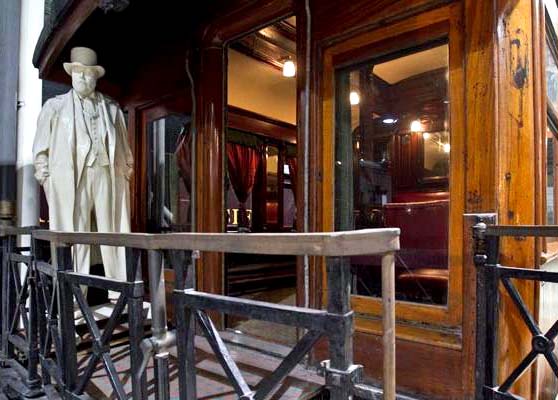
|
Statue of Van Horne on the rear platform of the car "Saskatchewan". |

St. Constant Quebec - On 7 Nov 2010, the museum will mark the 125th anniversary of the driving
of the Last Spike, completing the rail link across the new country of Canada.
For only the second time in the past 15 years, the private railway car that took Sir William Van Horne from Montreal to British Columbia in 1885 for the Last
Spike ceremony will be opened up tomorrow on the South Shore for guided tours.
The Last Spike ceremony marked the completion of a transcontinental railway in Canada, an event that also fulfilled a promise that was made to British Columbia
in 1871 as a condition of it joining Confederation.
Tomorrow marks the 125th anniversary of the driving of the Last Spike on the Canadian Pacific Railway line in Craigellachie, B.C.
To mark the anniversary, Exporail, the Canadian Railway Museum, in the South Shore suburb of St. Constant will be opening the Saskatchewan all day for special
guided tours in English and French.
The Saskatchewan was Van Horne's private railway car.
It has been housed in the museum since 1963, but to protect it from wear and tear, museum visitors aren't normally allowed inside.
They can see the inside only through its windows.
The historic rail car was first opened to the public for an event 15 years ago.
It was opened again for a special event this past summer.
Tomorrow will be the third time, since 1963, and people will get to do a walk-through in small groups of four or five, for 10 minutes at a time.
The Saskatchewan has a mahogany exterior and interior, with ornate interior mouldings.
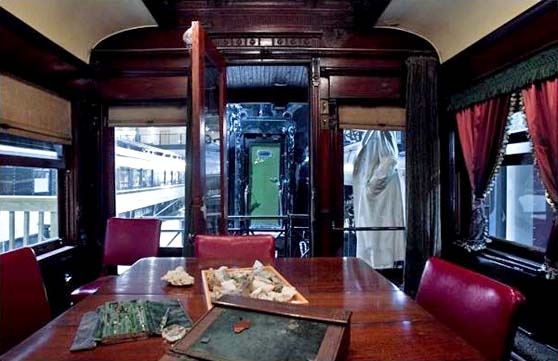
At one end of the car is a room that served as Van Horne's office as well as the dining room.
There is a dining table in the middle of the room and behind it a couch that folds down into a bed.
A walkway runs down the left side of the railcar.
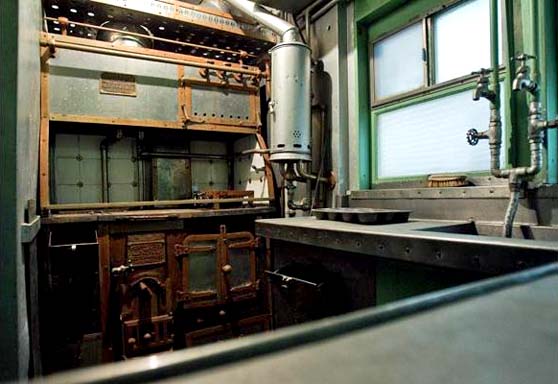
Walking down the corridor from the dining room/office, the next room on your right is the kitchen.
It features a coal cook stove, an icebox, pantry, and cupboards.
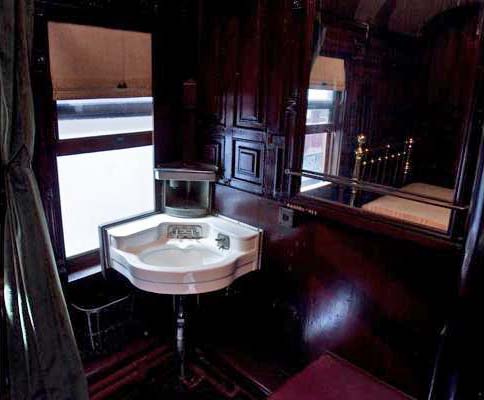
Down the corridor behind the kitchen is the room that served as Van Horne's private bedroom, consisting of a double brass bed, private toilet, and sink.
Behind the bedroom, the corridor curves away from the window and runs down the middle of the railcar.
At right are two bathrooms, one marked for men, the other for women.
At left are storage closets.
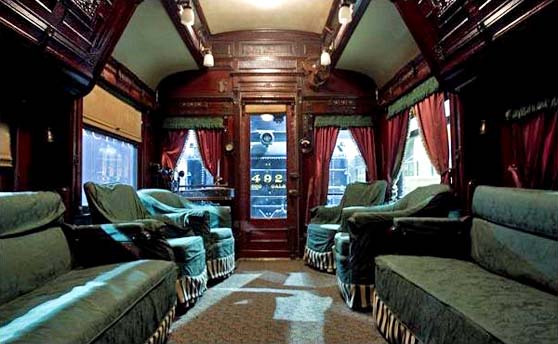
The corridor comes to a stop in front of a large living room that makes up the back end of the railcar.
Entering the living room, you see a sitting booth against the window on your left and another one against the window on your right.
Behind each of these booths are couches facing inward from the windows, and behind the couches a total of four sitting chairs.
Above the booths and couches are sleeping berths.
The booths and couches also fold down into beds.
The original promise to British Columbia in 1871 was to finish the transcontinental link within 10 years.
But a funding scandal saw construction suspended and the job didn't get done by 1881.
Instead, a new CPR syndicate was put together in 1881, and in 1882 the investors went down to Chicago and hired Van Horne as construction superintendent.
It was thought the rail link would take until 1891 to complete, but under Van Horne the job got done by 1885.
The rich Scottish-Montreal financiers who were partners in the syndicate liked Van Horne's tight budget management, work ethic, and personal modesty.
Asked to give a speech at Craigellachie, Van Horne delivered a 15-word address that has become famous for its simplicity and understatement.
He said, "All I can say is that the work has been well done in every way."
Thirty thousand people worked to link Canada by rail from coast to coast, including 6,000 labourers brought in from China.
Van Horne went on to become general manager and then president of the CPR.
After he retired in 1899, he oversaw construction of a rail network in Cuba.
When he died in Montreal in 1915, Cuba declared a national day of mourning.
The Saskatchewan was decorated with ribbons and turned into a funeral car.
Van Horne loved the Saskatchewan.
His very last ride in it was a posthumous one, a slow ride back to his hometown of Joliet, Illinois, USA, where he was buried.
Tours of the Saskatchewan take place tomorrow from 10:30 a.m. to noon and from 1 to 4 p.m.
For more information, phone Exporail at 450-632-2410 or visit expoRail.org.
David Johnston.

|






